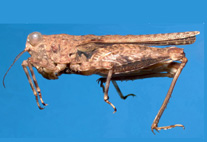Abstract
The classification of Culex L., with 768 species worldwide (Harbach 2015), is based mainly on adult anatomical characters (Harbach et al. 2012). The accurate identification of the 198 species included in the subgenus Culex is dependent on a few morphological characters, principally of the male genitalia (Harbach et al. 2012). Most species within Culex (Culex) have been described based on male genitalia due to their low intraspecific variability compared to characters of females and larvae. Male genitalia provide synapomorphic characters useful in establishing phylogenetic relationships in Culicidae (Reinert et al. 2008, Reidenbach et al. 2009, Harbach et al. 2012, Laurito & Almirón 2013), as well as autapomorphic traits allowing specific identifications.

